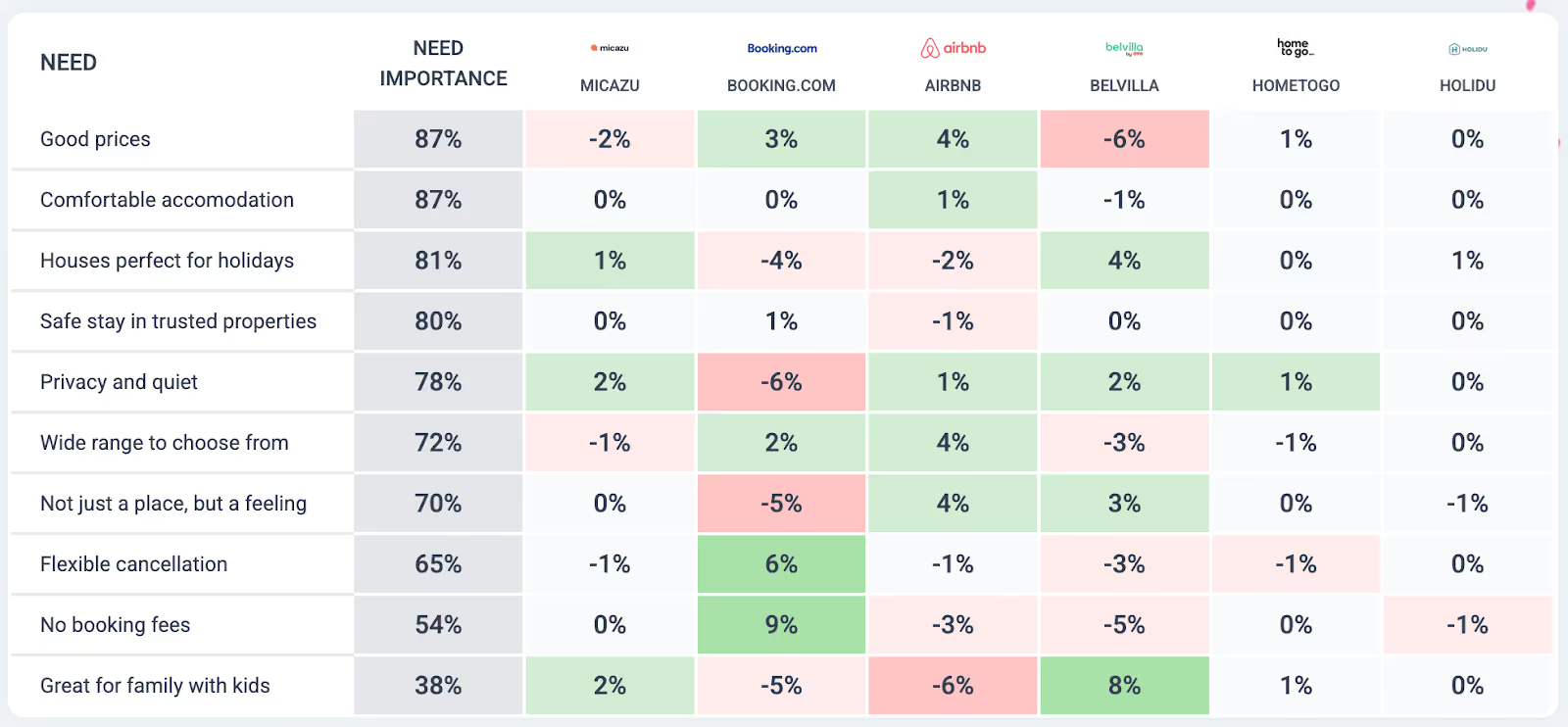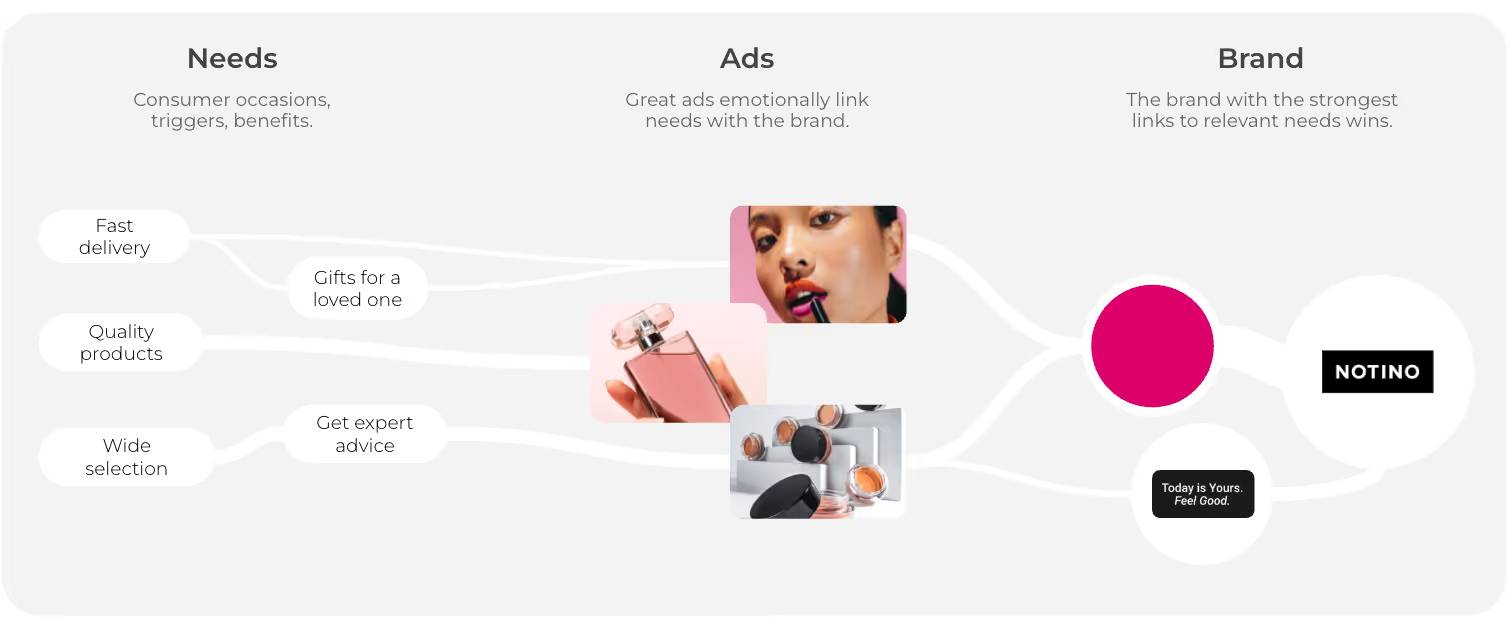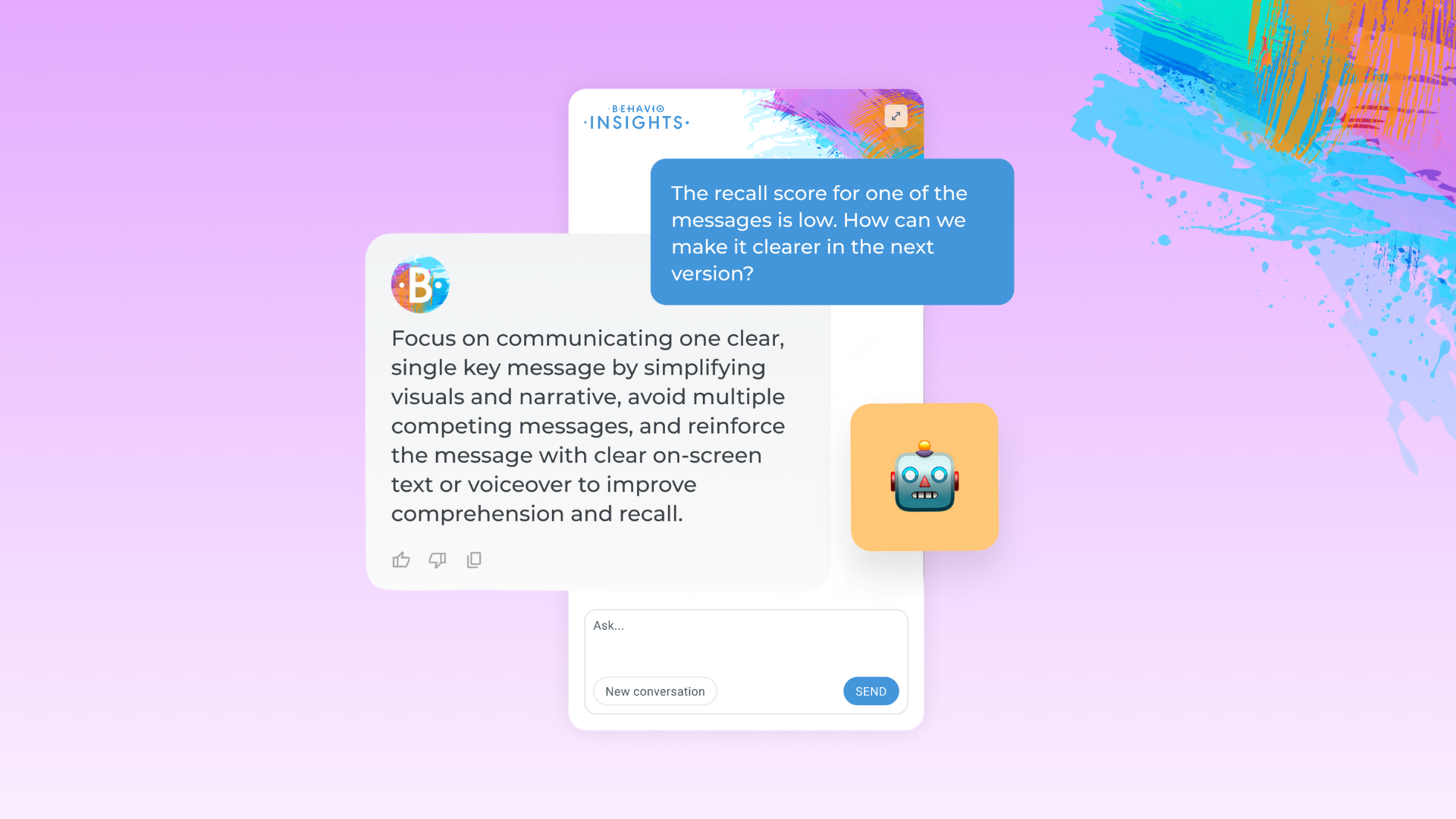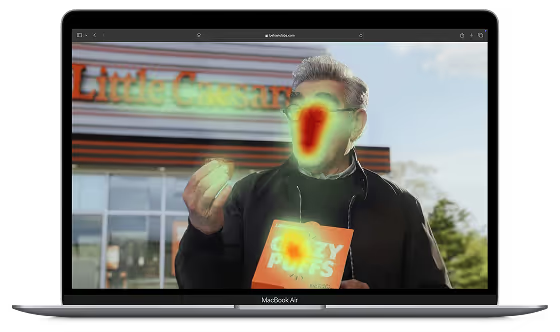Finding the right message for your audience is one of the hardest (and most important) jobs in marketing. A message that resonates can unlock growth, while the wrong one wastes media spend and gets lost in the noise.
The challenge is that audiences are bombarded with ads every day, and most of the obvious benefits are already claimed by big brands.
To break through, you need to understand both the needs of your audience and the competitive context you’re operating in. That’s where market tracking, brand tracking, and ad testing come together.
- Market tracking shows you which needs exist and which are already owned by competitors.
- Brand tracking reveals what your audience associates with you today and how those associations shift over time.
- Ad testing helps you craft and validate creative that connects your brand to the right need.
Together, these tools provide the foundation for building messages that cut through and drive growth.
The core principle: finding unmet consumer needs
At the heart of effective brand messaging is finding the right need to connect your brand with. This need has to check two boxes:
- Big enough to fuel growth. If the benefit you choose is too niche, it won’t move the needle on awareness or sales. It should be relevant to a wide enough audience to matter for your brand at its current stage of growth.
- Unmet by competitors. If another brand already owns the space in consumers’ minds, you’ll be fighting an uphill battle. The best opportunities are the ones with “free mindshare”— needs that are important to people but not yet strongly linked to a competitor. *
*This principle applies most to challenger brands, who need to focus their efforts on a single, unclaimed need to stand out. Market leaders, on the other hand, must fight to stay present across all the key needs their audience cares about to maintain dominance.
It’s also crucial to acknowledge that not every message resonates with everyone. Consumer needs differ by market, and so should your communication.
A message that resonates in one country may fall flat in another. That’s why successful brands like Stock Spirits Group adapt their messaging to fit the local context — choosing a single, clear benefit to own in each market.
How market tracking helps you find the right message
The foundation of this process is understanding what people in your market actually need. Market tracking makes this visible by showing which needs truly matter to consumers and which brands are already fulfilling them.
By mapping needs to the brands people associate with them, you get a clear picture of the competitive landscape. This highlights your true competitors: the brands speaking to the same needs and targeting the same segments.
From this data, you can quickly see:
- Which needs are most important in the market.
- Which needs are already strongly linked to certain brands.
- Where gaps exist — needs that are valuable to consumers but not yet claimed.
This measured view enables strategic decision-making when defining your brand proposition. Instead of guessing, you can anchor your messaging in data, connect your brand to unmet needs, and claim space in the minds of your audience.
Case study: Micazu vs. the Market Leaders
To see this principle in action, let’s look at the Dutch holiday rental market, where Micazu competes against five major players: Booking.com, Airbnb, Belvilla, HomeToGo, and Holidu.
Our market tracking analysis revealed that Booking.com and Airbnb already dominate the most important needs: good prices, convenience, and wide selection. These associations are so strong that competing on the same ground is nearly impossible for smaller players.

The challengers took two different approaches when crafting their messaging:
- Belvilla positioned itself as “great for families with kids.” This was a meaningful need for a large audience that wasn’t fully claimed by Booking or Airbnb. By consistently linking its brand to this benefit, Belvilla carved out a clear and differentiated space.
- Micazu, a much smaller challenger brand, chose to emphasize “no booking fees.” On the surface, this looks like a strong value proposition. But in reality, it fails, because Booking already covers this ground in the minds of consumers. Rather than setting Micazu apart, it only reinforced the leader’s dominance.
The lesson is simple: go after needs that aren’t already covered. If you choose a need that a big brand has already claimed, your message won’t stick. But if you find an unmet need that’s big enough to matter, you can establish your own space and grow, even against the strongest competitors.
Connecting needs, ads, and brand
This brings us to a useful framework for building effective messages: consumer needs → ad messaging → brand perception.

The process works like this:
- Identify the unmet need – what are consumers looking for that isn’t fully addressed by competitors?
- Craft the ad message – your creatives should speak directly to that need, highlighting the benefit or occasion that sets you apart.
- Shape brand perception – consistent messaging reinforces how consumers see your brand and builds ownership of that need over time.
This approach helps marketers see the full journey from insight to impact. It also highlights where a message may be misaligned; if the need is unclear or already claimed, the ad will fail to shift perception.
Applying the framework
Once you understand the needs → ad → brand framework, the next step is applying it strategically based on your brand’s position in the market:
- For big brands: You already have strong recognition, so your goal is to communicate across all the major needs your audience cares about. Even if competitors are strong in some areas, reinforcing these needs ensures your brand stays top-of-mind and maintains market leadership.
- For challengers or smaller brands: Focus is critical. Pick one big, unmet need that is significant enough to drive growth but not yet claimed by competitors. By owning this niche, you can carve out space in the market and grow efficiently.
Final thoughts
Finding the right message isn’t about being the loudest, it’s about being the most relevant. The key is balancing the size of the consumer need with the available mindshare.
Growth comes from owning one clear, unmet need in each market, and reinforcing it consistently across your communication.
That’s why tools like market tracking, brand tracking, and ad testing are so powerful. By using them together, you can confidently identify the right message for your target audience and turn it into a lasting driver of growth.
Frequently asked questions
Consumer needs differ by country. Tailoring your message to local priorities ensures it resonates and builds stronger connections.
Focus on one big, unmet need that matters to consumers but isn’t claimed by market leaders. Owning this niche helps smaller brands stand out and grow.





.avif)





.png)








